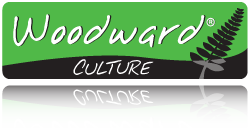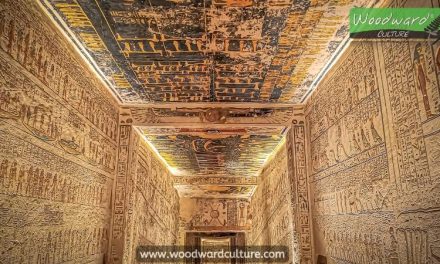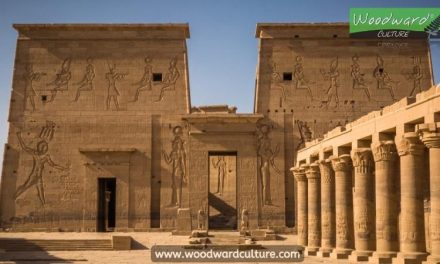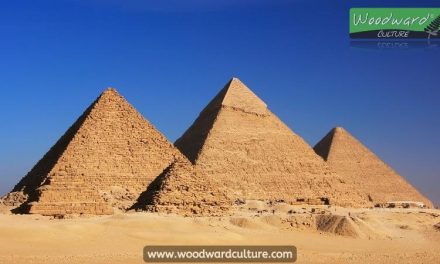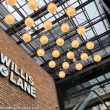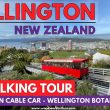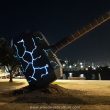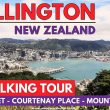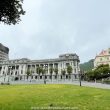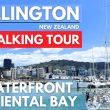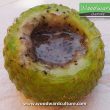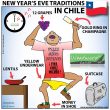In this 4K Walking Tour of Wellington, we start outside the library of the New Zealand Parliament buildings, we walk past The Beehive (The Executive Wing of Parliament), then we go along Lambton Quay, which is the main street of Wellington, during the lunch hour. We finally end up at Cuba Street with its famous bucket fountain.
Use headphones for the best immersive experience while listening to the sounds of daily life in Wellington.
Highlights of the Wellington Walking Tour
Here are some of the highlights of this walking tour that you will see in the 4K video. You can find the timestamps to each of these attractions in the description of the video on YouTube.
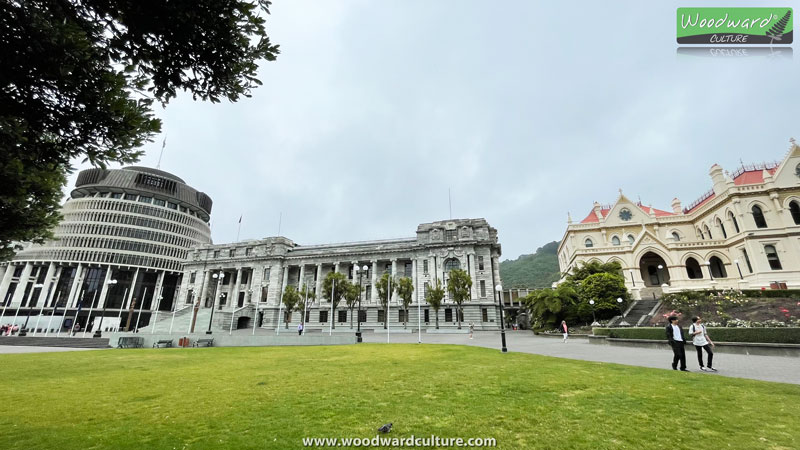
Parliamentary Library
We start outside the Parliamentary Library which was built in 1899 in a Victorian Gothic style.
We go down the steps for a general view of Parliament Grounds.
Parliament House
There is a plaque on the front right corner of the building. The capital of New Zealand moved from Auckland to the more centrally located Wellington in 1865. This plaque marks the first Parliamentary session in the new capital on 26 July 1865.
The original wooden building was destroyed by fire in 1907. Work began in 1912 to replace it but because of a shortage of materials and manpower due to World War 1, the building wasn’t completed until 1922.
You will see two Māori carvings at the bottom of the steps. To the left of these statues (and steps) you will find the entrance to the Parliament Buildings. Notice the beautiful Māori carving around the “door” frame.
There are free 60-minute guided tours of the Parliament buildings multiple times every day though you need to book in advance which you can do online.
The Beehive
The Executive Wing commonly known as “The Beehive” was completed in 1979.
The Prime Minister’s office is on the 9th floor. Ministers have offices on floors four to seven – the higher their floor the more senior the Minister’s position.
The Wellington Cenotaph
The Wellington Cenotaph. It commemorates New Zealanders who died in World War I and World War II. The two bronze lions were added in commemoration of World War II.
There are speakers in the ground so you can hear the sound of trickling water around the cenotaph. It is quite relaxing.
Lambton Quay
Lambton Quay is considered the main street, the heart of the central business district of Wellington.
Lambton Quay was the original shoreline of Wellington when the New Zealand Company settlers arrived in 1840. Reclamation began in 1852.
During our walking tour, you will notice a lot of building/construction going on at the moment. This is mostly for earthquake-resistant reinforcement of buildings as required by law. The largest earthquake in New Zealand (that has been recorded) was centred near Wellington in 1855 with a magnitude of 8.2, hence these precautions.
Also note that it was lunchtime when I was recording this video so there were more people out on the street than normal.
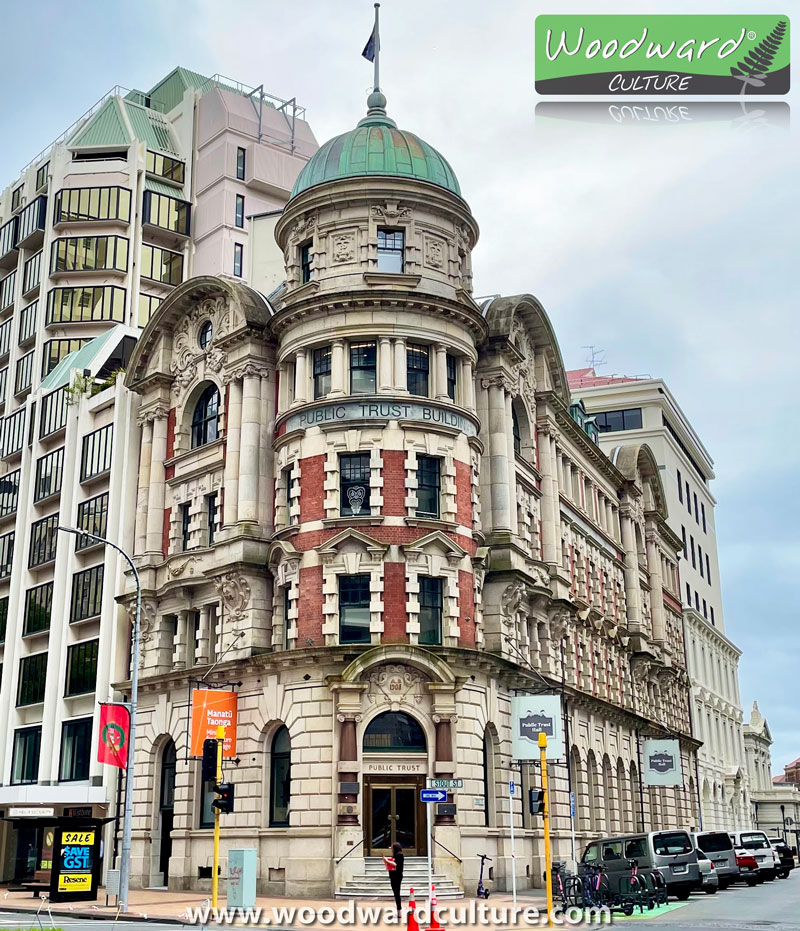
We will go past the Old Public Trust Building which was opened in 1909. The Public Trust (established in 1873 by Sir Julius Vogel) was the first institution in the world to offer state trusteeship and executorship. The Public Trust administered the estates of soldiers who died without making a will. The Public Trust Building was one of the first large public buildings in New Zealand to be built with an earthquake resistant steel frame structure.
Midland Park (a small park where office workers like to hang out at lunchtime), and the lower entrance to the famous Wellington Cable Car.
We will see the iconic MLC building completed in 1940. The clock at the top of the building was installed in 1953. In front of MLC building is Protoplasm – A kinetic sculpture comprising of four rotating ‘pebbles’ that was made in 2002 by Phil Price.
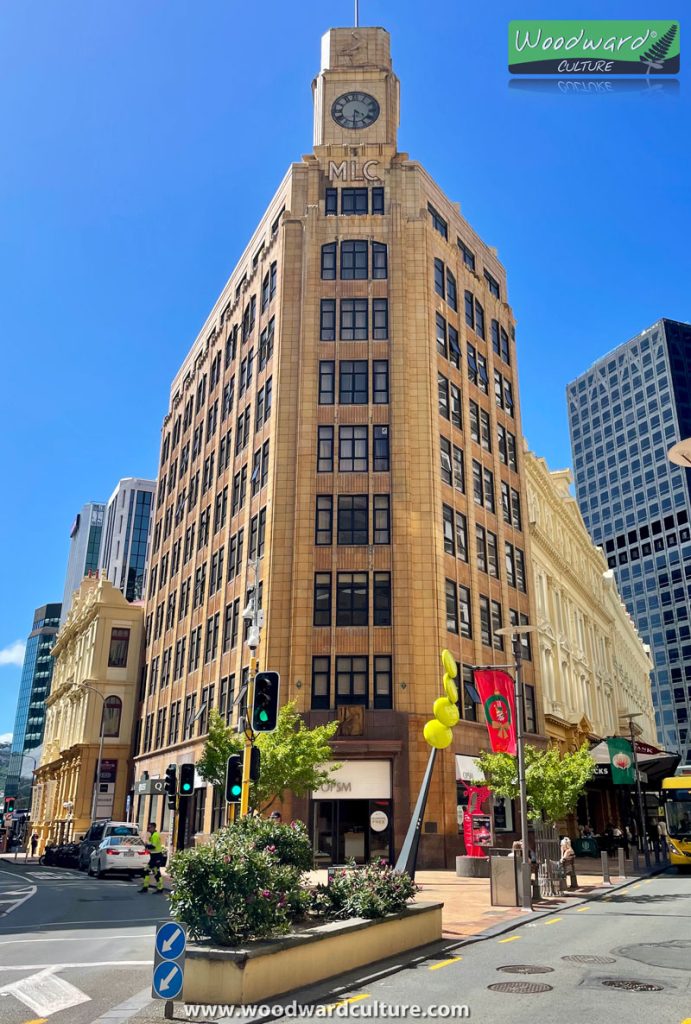
We also go past Plimmer Steps. John Plimmer arrived in Wellington in 1841 and became an important businessman in the city. Here you will see a statue of John Plimmer and his dog Fritz.
Across the street from Plimmer Steps is The Old Bank Arcade. It was the former head office of the Bank of New Zealand from 1901 to 1984 but now has many boutique stores. In the underground section, there are many eating establishments. This is the last building we look at on Lambton Quay before going along Willis Street.
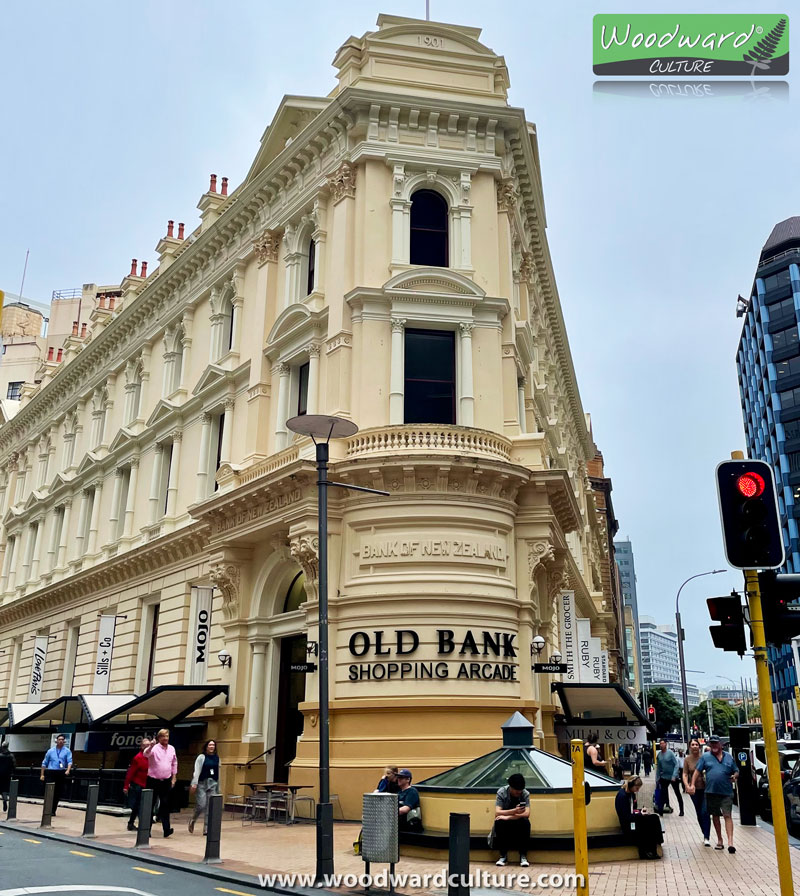
Willis Street
Next we continue along Willis Street.
Here you will find The Majestic Centre – currently the tallest building in Wellington at 116 metres (381 ft).
Just off Willis Street and before we go around the corner to Manners Street, we see St Mary of the Angels church in the background. It opened in 1922 after the original church was badly damaged by fire.
On the corner we also see a beautiful French Renaissance timber house which was built in 1902 further up the street and moved here in 1991.
Manners Street
There currently isn’t much to see on this part of Manners Street (on the way to Cuba Street).
You might want to listen to the characteristic sound the traffic light intersections make when you can cross the street.
Also notice how there is a “look right” sign painted on the street. In New Zealand we drive on the left-hand side of the street so vehicles will be coming from the right.
On the corner of Manners Street and Cuba Street we see another former Bank of New Zealand building built in 1912.
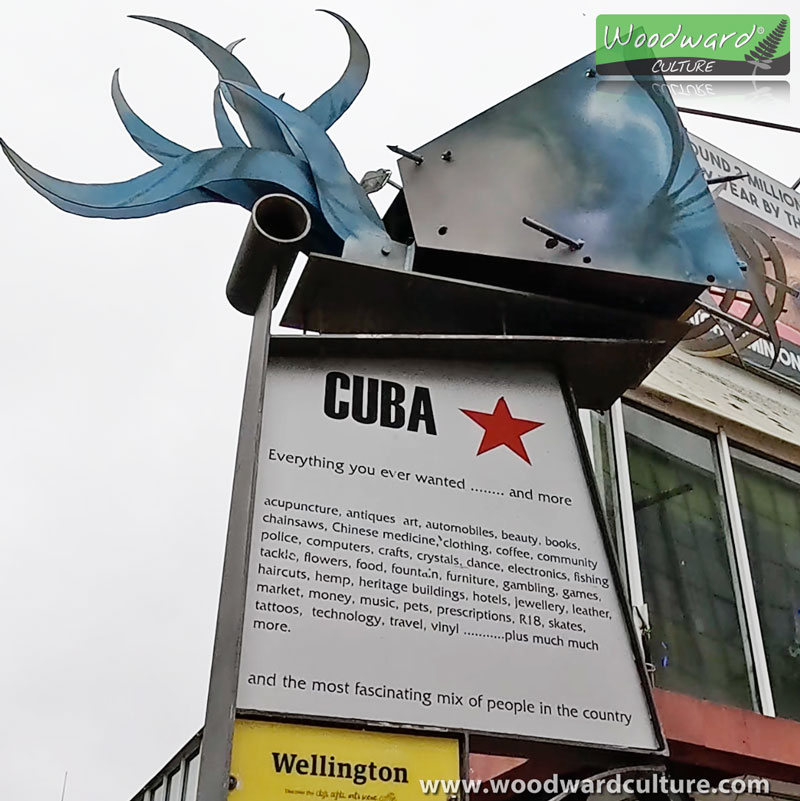
Cuba Street
Cuba Street is one of the most famous streets in downtown Wellington (along with Lambton Quay and Courtney Place).
Cuba Street is a pedestrian mall known for its bohemian nature. It has many cafés and eating establishments, a wide variety of independent shops (from music to comics to craft shops) combined with heritage architecture and just a cool vibe in general.
On one of the MANY days that we came here, there was a young (looked school age) guitarist playing Joe Satriani and Steve Vai on his electric guitar on a little stage (impressive feat) and on other days other musicians and performers.
Cuba Street is also known as the home of the famous bucket fountain of Wellington. It consists of a series of “buckets” that fill with water until they tip, spilling their load into the buckets and pool below.
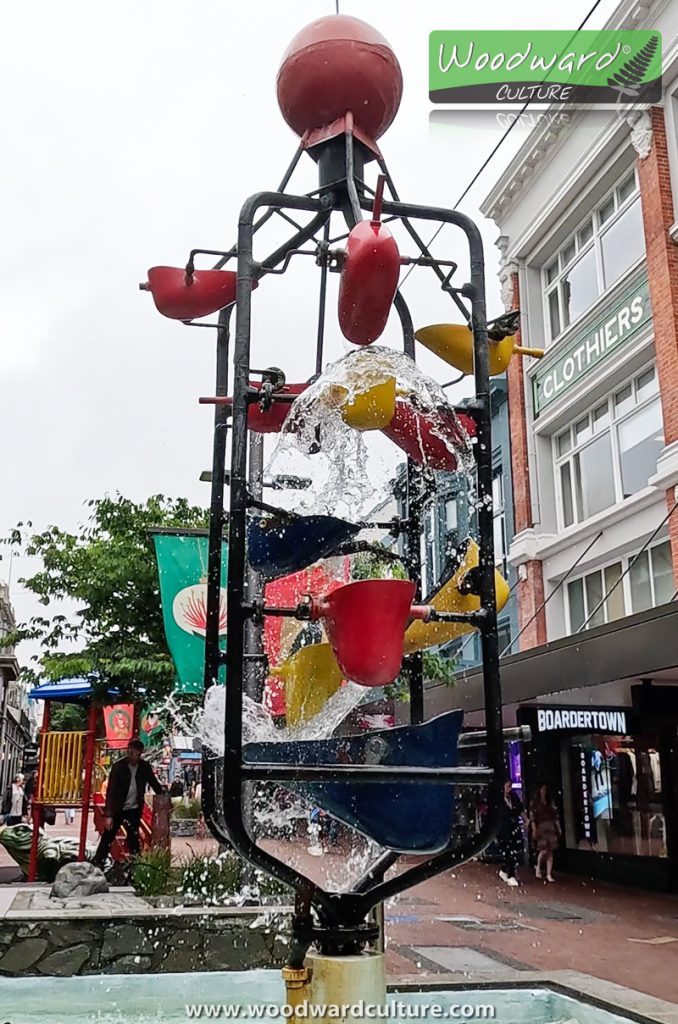
Next to the bucket fountain is a small playground for kids. The playground has a large fibreglass replica of a tuatara (a rare reptile found only in New Zealand) which kids (ok, and adults) can climb on.
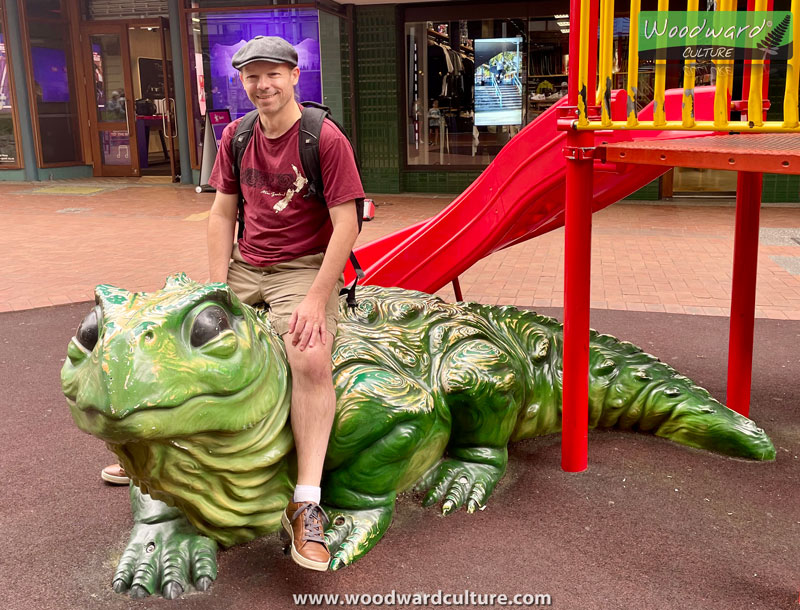
Left Bank
Just off Cuba Street is a lane called Left Bank. with more boutique stores including an Ethiopian restaurant (yummy food!) and Pegasus Books. This small independent bookstore is THE BEST! If you love books, you will easily find yourself lost in here for hours on end. The variety from antique books (for New Zealand) to new and secondhand books is incredible. There are shelves after shelves from floor to ceiling … and ladders to help you reach them. Yeah, you can probably tell we are book lovers.
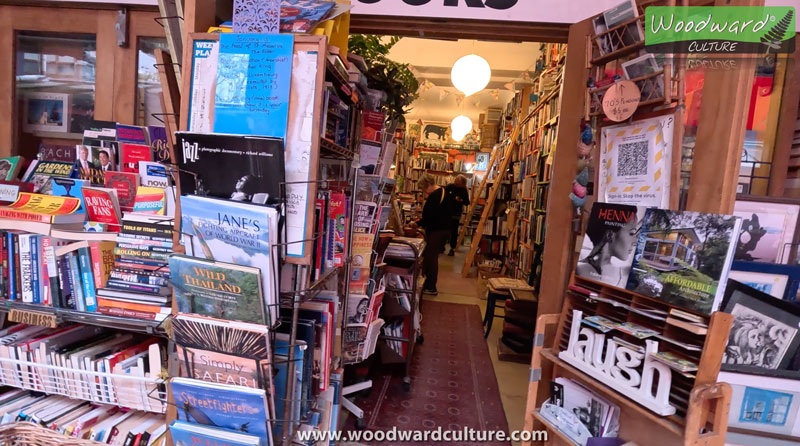
More to see and do in Wellington
See our other 4K walking tour: Wellington waterfront and Oriental Bay Walk (1 hour)
More videos coming soon.
